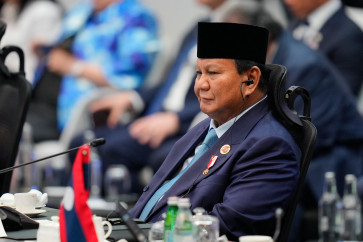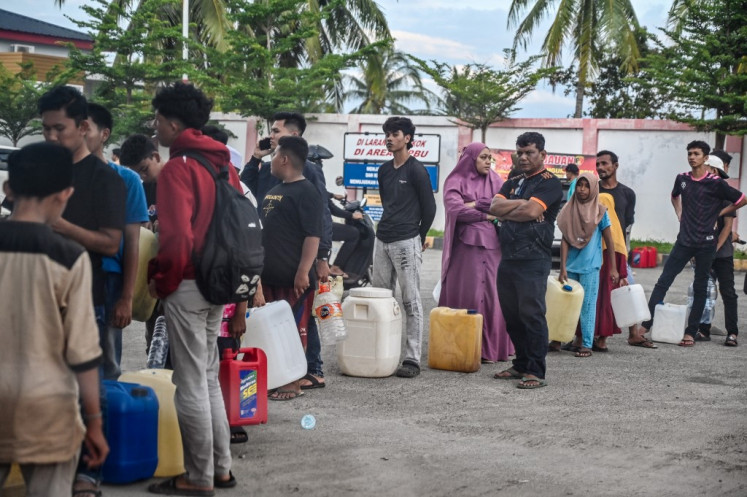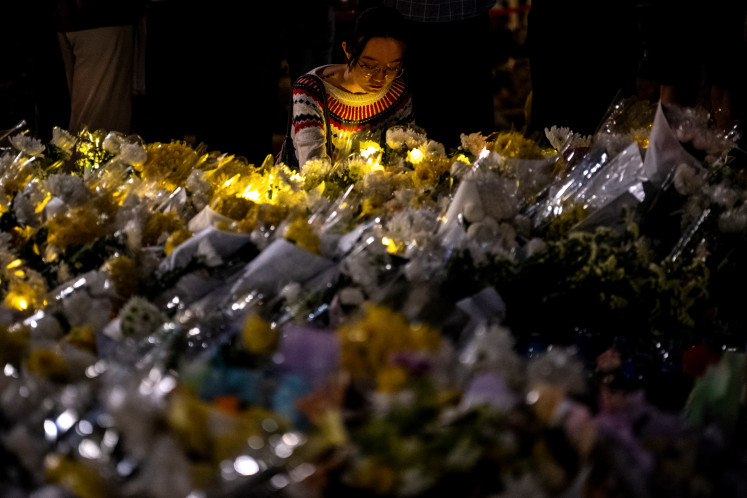Popular Reads
Top Results
Can't find what you're looking for?
View all search resultsPopular Reads
Top Results
Can't find what you're looking for?
View all search resultsRI, US launch climate study of Puncak Jaya glaciers
Scientists from Indonesia and the US have set sail on a journey to discover the climate of the future
Change text size
Gift Premium Articles
to Anyone
S
cientists from Indonesia and the US have set sail on a journey to discover the climate of the future. Their first destination: the past.
The Meteorology, Climatology and Geophysics Agency (BMKG) on Tuesday launched an investigation with two US university research centers that plans to learn more about climate history by analyzing ice cores to be extracted from glaciers on Jaya Wijaya Mountain near Puncak Jaya , Papua.
The investigation will give a more complete record of past climate change and indicate trends in future climate change — globally, in the tropics, and especially in Indonesia, said BMKG director general Sri Woro B. Harijono.
“The investigation is prestigious. It is a milestone for climate study in Indonesia.”
BMKG scientist Dodo Gunawan left today for Puncak Jaya, which is home to the only glaciers remaining in the equatorial Pacific Ocean region.
He will work with R. Dwi Susanto, an Indonesian scientist at Columbia University’s Lament-Doherty Earth Observatory and Lonnie G. Thompson from the Byrd Polar Research Center at The Ohio State University (OSU).
They plan to extract six cores from the bedrock and ship the samples in freezers to OSU for analysis.
Scientists will use the cores to reconstruct the history of change in climate and the environment.
Dwi said that the ice cores could not be stored in Indonesia because the country did not have the required capability.
“The temperature must stay below minus 10 degree Celsius, and Indonesia still has power supply problems.”
Ice cores extracted from around the world are kept at OSU, she added.
Dodo said that the investigation would reveal the history of temperature and precipitation variation in the area. Changes in vegetation would be indicated by pollen levels and a history of fire would be developed from plant fragments and organic substances trapped in the ice.
Based on previous research at Kilimanjaro, a 50-meter-long ice core could provide 11,700 years of past climate data, Thompson said.
The project’s importance is underscored by one inescapable fact: The ice is melting, Dwi said.
Puncak Jaya, Kilimanjaro in Tanzania and the Andes in Peru are the only remaining tropical mountains with year-round ice coverage. The Papuan mountain lost 78 percent of its ice between 1936 and 2000,
he added.
“Glaciers throughout the tropics are in retreat. Some glaciers in New Guinea have already disappeared. The glaciers at Puncak Jaya will soon share their fate.
“Time is critical,” Dodo said.
Thompson said this was the last chance to investigate climate history using ice in the tropics.
“My only concern is we may be too late. The best time to have done it was probably the 1930s. The ice is shrinking very fast … the difference between last year and this year is amazing,” he added.










